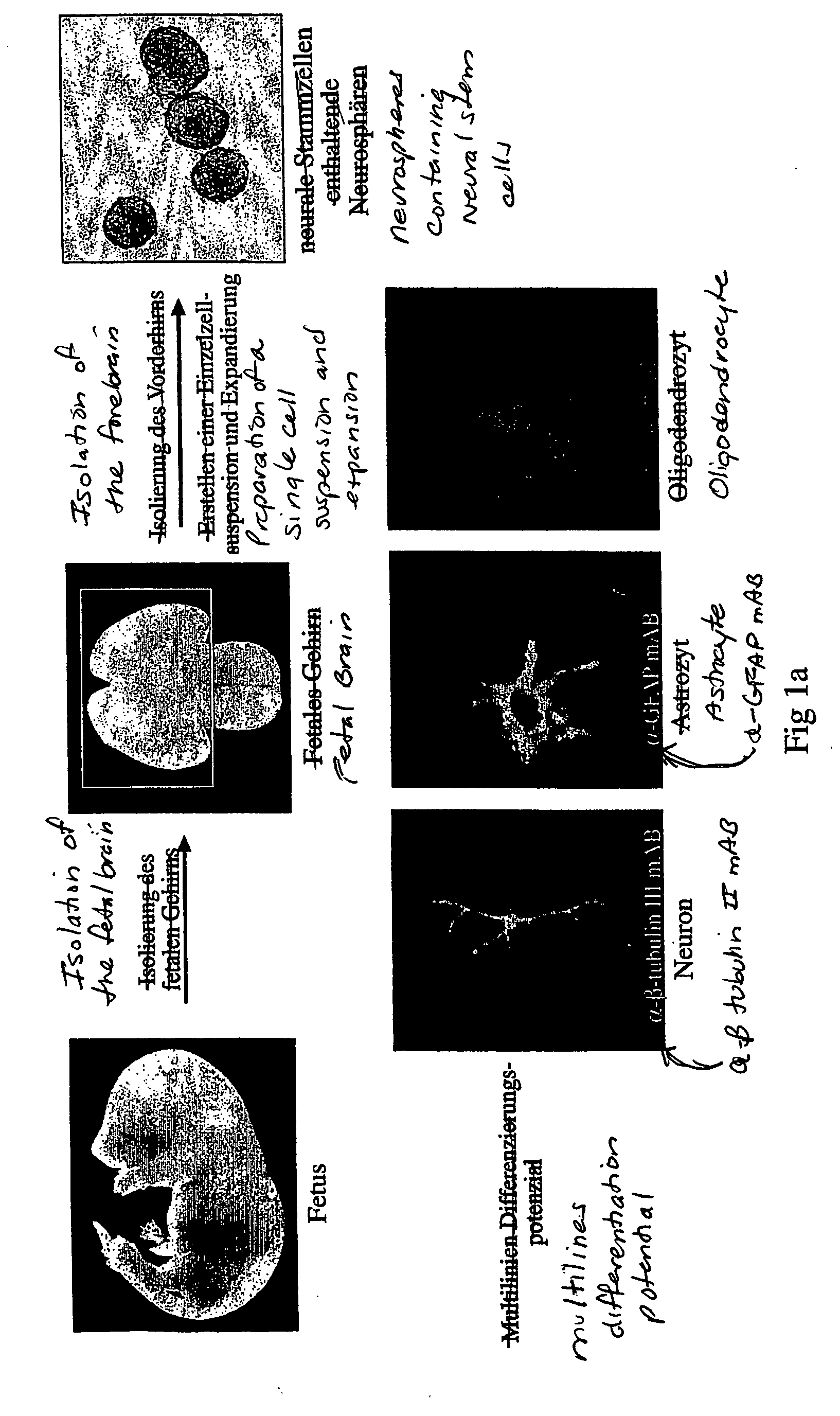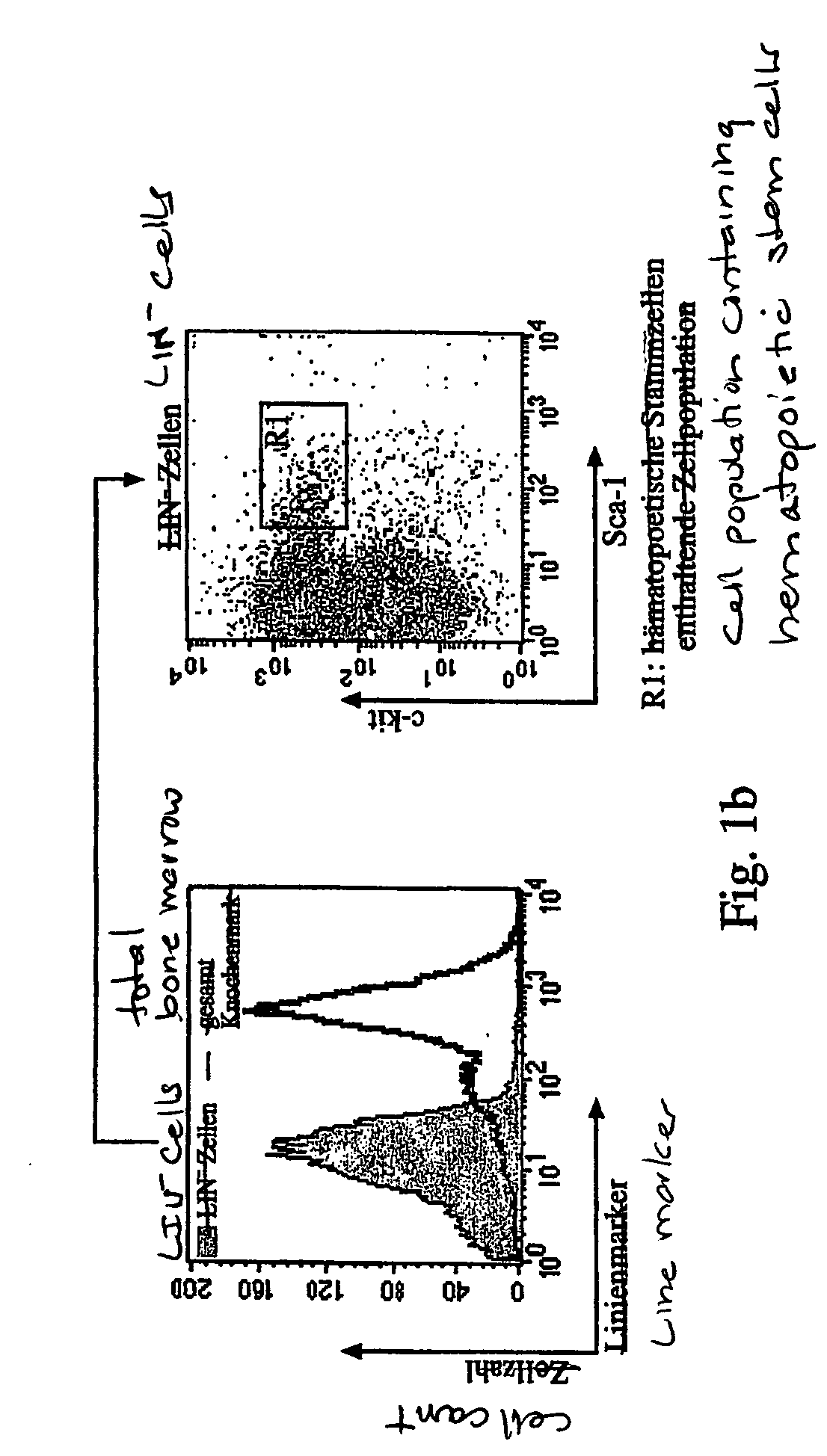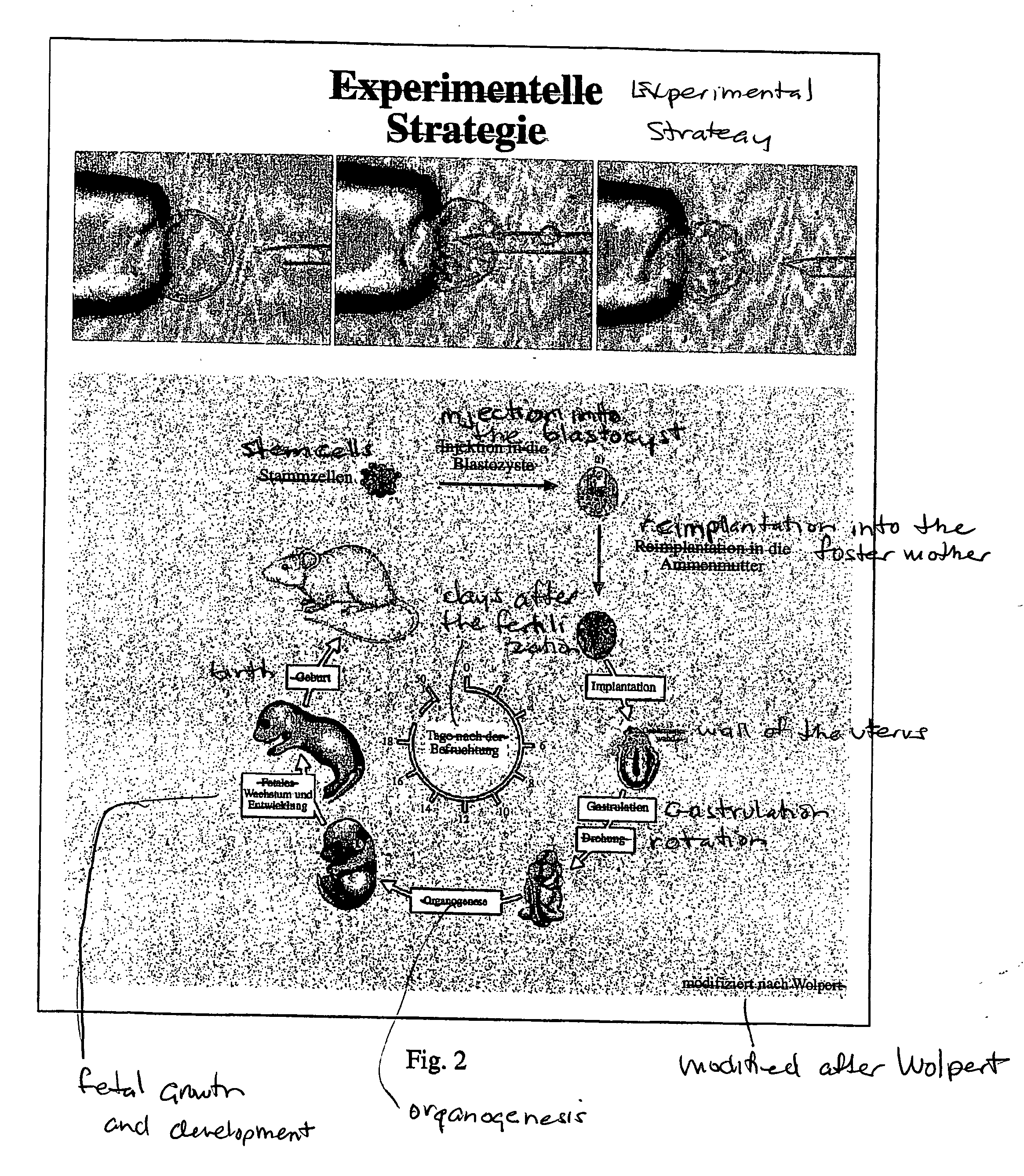Method for producing stem cells with increased developmental potential
a technology of stem cells and embryos, applied in the direction of artificial cell constructs, genetic material ingredients, genetically modified cells, etc., can solve the problem that the production of embryonic stem cells is a cause for very severe ethical concerns
- Summary
- Abstract
- Description
- Claims
- Application Information
AI Technical Summary
Benefits of technology
Problems solved by technology
Method used
Image
Examples
example 1
Isolation of Neural Stem Cells
[0026] For the isolation of neural stem cells, the forebrain was isolated from mouse fetuses or from the brain of adult animals and transferred into an single cell suspension. In presence of the neural growth factors EGF (epidermal growth factor) and FGF-2 (fibroblast growth factor 2), neural stem cells form little balls, so-called neurospheres. When the neurospheres are individualized, then from a cell a new neurosphere as well as neurons, astrocytes and oligodendrocytes may be generated after the division. The neural stem cells of FIG. 1a were then subjected to the method according to the invention.
example 2
Isolation of Hematopoietic Stem Cells
[0027] Hematopoietic stem cells were isolated from the bone marrow (BM) of adult mice through a negative / positive selection strategy by means of monoclonal antibodies. In a first step, all mature cells were depleted by antibodies, which are bound to small magnets. Non-bound cells (LIN− cells) were dissociated by flow cytometry with two further antibodies, one of which is directed against the receptor tyrosine kinase c-kit and the other one against the stem cell antigen Sca-1. Hematopoietic stem cells of the mouse have the phenotype LIN−, c-kit+, Sca-1+. The results are shown in FIG. 1. The framed cell population of FIG. 1b was then subjected to the method according to the invention
example 3
Experimental Strategy for the Analysis of the Plasticity
[0028] In order to determine the plasticity of the employed somatic stem cell types, neural and hematopoietic stem cells of the Examples 1 and 2 were isolated and injected into mouse blastocysts (see FIG. 2). From the blastocyst develops the complete embryo and later the adult animal. By this method, the injected stem cells are subjected to all inductive processes, which take place during the development of the embryo. If the used hematopoietic or neural stem cells should have the capability to differentiate to all or many tissues or cell types of the adult animal, then descendants of the injected stem cells should be detectable for the developed animal in several different or all tissues and organs. If this detection is positive and the donor cells carry foreign, tissue-specific markers and perform foreign, tissue-specific functions, then the treatment of the somatic stem cells has led to an increased plasticity.
PUM
 Login to View More
Login to View More Abstract
Description
Claims
Application Information
 Login to View More
Login to View More - R&D
- Intellectual Property
- Life Sciences
- Materials
- Tech Scout
- Unparalleled Data Quality
- Higher Quality Content
- 60% Fewer Hallucinations
Browse by: Latest US Patents, China's latest patents, Technical Efficacy Thesaurus, Application Domain, Technology Topic, Popular Technical Reports.
© 2025 PatSnap. All rights reserved.Legal|Privacy policy|Modern Slavery Act Transparency Statement|Sitemap|About US| Contact US: help@patsnap.com



